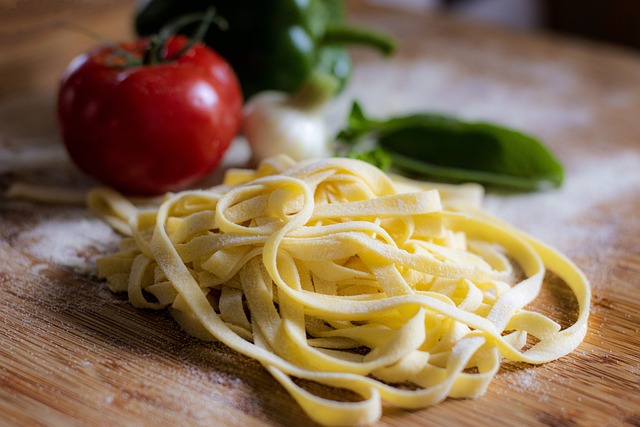Landlords can maximize rental property ROI by balancing short-term affordable kitchen renovations with long-term financial goals. A strategic assessment of the property, focusing on layout, functionality, and market trends, guides cost-effective upgrades aligned with tenant preferences. Prioritizing essential updates like hardware, energy-efficient appliances, and smart storage enhances kitchen appeal while keeping costs down. By blending affordability and modern amenities, landlords can attract high-paying tenants, boost occupancy rates, and ensure a robust ROI on their rental investments.
In the dynamic real estate market, balancing upgrades to meet Return on Investment (ROI) expectations for rental income is crucial. This article guides property managers through a strategic approach, starting with understanding ROI dynamics specific to rental properties and setting realistic expectations. It delves into assessing the current state of units before renovations, prioritizing upgrades that blend cost-efficiency with functionality. Key focus areas include the transformative power of an affordable kitchen renovation in boosting ROI, along with long-term value strategies centered around maintenance and market trends.
Understanding ROI for Rental Properties: Setting Realistic Expectations
Understanding ROI for Rental Properties: Setting Realistic Expectations
When it comes to rental income, Return on Investment (ROI) is a key metric that landlords and investors closely monitor. It represents the profit generated from an investment, usually expressed as a percentage. In the context of rental properties, an affordable kitchen renovation might increase the property’s appeal, attracting higher rent or faster occupancy rates. However, setting realistic ROI expectations is crucial to ensure financial success.
Landlords should consider both short-term and long-term impacts when planning upgrades. While an affordable kitchen renovation can boost rental values, it’s essential to weigh this against immediate costs and potential market fluctuations. Setting achievable goals, based on comparable properties in the area and current market trends, will help maintain a healthy ROI. Understanding your target demographic and their preferences is also vital, as well-executed renovations that cater to these needs can significantly enhance investment returns.
Assessing the Current State: A Critical Step Before Renovating
Before embarking on any renovation, especially for an affordable kitchen upgrade aimed at boosting ROI in rentals, it’s crucial to assess the current state of the property. This step involves a thorough inspection to identify both strengths and weaknesses. For example, while an outdated kitchen might be a clear indication for change, assessing its layout, functionality, and overall condition can reveal potential cost-saving areas or design elements that can be repurposed.
This initial evaluation also helps in setting realistic expectations. It allows rental property owners to prioritize upgrades based on market trends, tenant preferences, and budget constraints. By understanding the current landscape, they can make informed decisions, ensuring any renovations are strategic investments that not only enhance the rental appeal but also deliver a substantial return on investment.
Prioritizing Upgrades: Balancing Cost and Functionality
When planning an affordable kitchen renovation, balancing cost and functionality is key to meeting ROI expectations for rental income. Start by assessing the current state of your kitchen and identifying essential upgrades that will maximize space efficiency, storage, and overall practicality. Prioritize improvements that have a significant impact on the kitchen’s usability without breaking the bank. For example, updating hardware, replacing outdated appliances with energy-efficient models, and installing smart storage solutions can significantly enhance the kitchen’s appeal to tenants while keeping costs manageable.
Consider the long-term benefits of each upgrade and how they align with your rental property’s overall value. An affordable kitchen renovation doesn’t have to be minimalistic; strategic investments in high-quality materials, modern fixtures, and well-designed layouts can create a space that feels luxurious and inviting. By carefully curating an upgrade plan that blends affordability with functionality, you’ll not only satisfy tenant expectations but also ensure a sound ROI for your rental investment.
The Role of an Affordable Kitchen Renovation in Increasing ROI
An affordable kitchen renovation can be a powerful strategy to boost ROI for rental properties. Kitchens are often considered the heart of a home, and an updated space can significantly impact a property’s appeal and desirability among potential tenants. A cost-effective renovation focuses on enhancing functionality, aesthetics, and modern amenities without breaking the bank. This might involve replacing old cabinets with sleek, efficient models, installing new countertops, adding energy-efficient appliances, and incorporating clever storage solutions.
These upgrades can increase the property’s overall value, attracting tenants willing to pay a premium for a well-appointed kitchen. Moreover, an affordable renovation allows landlords to offer competitive rental rates, ensuring higher occupancy rates and better ROI. By prioritizing practical improvements over extravagant features, property owners can effectively navigate the balance between enhancing living spaces and achieving financial goals.
Strategies to Ensure Long-Term Value: Maintenance and Market Trends
To ensure long-term value, landlords should balance upgrades with strategic maintenance and keep an eye on market trends. An affordable kitchen renovation can be a powerful tool to achieve this balance; updating kitchens increases tenant satisfaction and property appeal, potentially commanding higher rental rates over time. However, it’s crucial not to overspend on renovations that may not break even in the current market. Conducting thorough research is key—landlords should analyze local housing markets, understand tenant preferences, and stay informed about design trends to make informed decisions.
By prioritizing practical upgrades and staying aligned with market demands, landlords can maximize their return on investment (ROI). For instance, an affordable kitchen renovation that incorporates modern appliances, efficient storage solutions, or a sleek aesthetic could attract longer-term tenants willing to pay premium rents. This strategic approach not only enhances property value but also ensures that renovations remain relevant and profitable over the long term.
Balancing upgrades to meet ROI expectations for rental income requires a strategic approach. By understanding ROI, assessing the current state of properties, prioritizing renovations based on cost and functionality, and focusing on key areas like affordable kitchen renovations, investors can maximize their returns while ensuring long-term value through proper maintenance and market trend awareness. These strategies collectively contribute to a robust investment strategy for rental properties.
